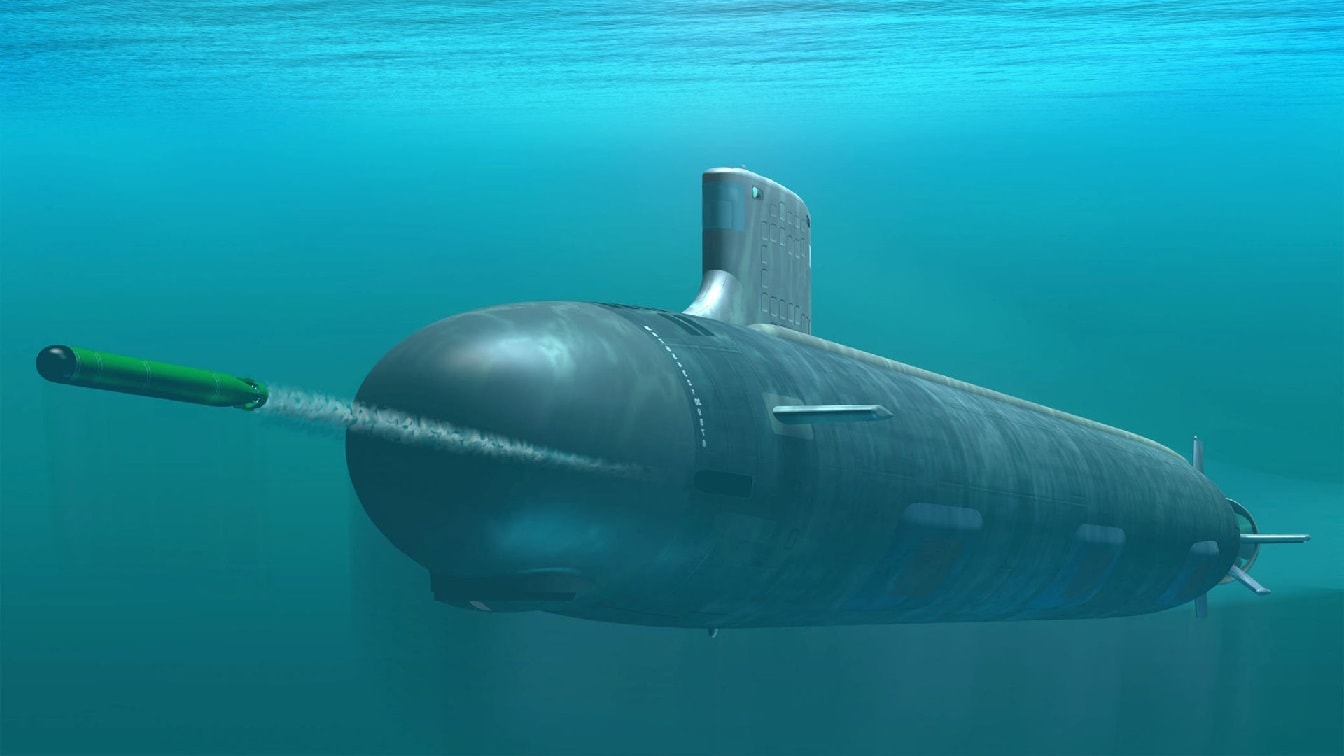In September 2021, AUKUS, a trilateral pact among Australia, the United Kingdom, and the United States, sent shockwaves throughout the West.
(Subscribe to 19FortyFive‘s New YouTube Channel here.)
Australia announced that it would be walking back on an agreement with France to procure submarines and instead would be moving forward with a trilateral pact that would give the Royal Australian Navy conventionally-armed but nuclear-powered submarines.
The decision of the Australian government caused a diplomatic episode between Canberra and Paris but also damaged the U.S.-Franco relationship. To a large degree, the relationships have been mended, and work has started on the new submarines designed to deter and, if necessary, fight China.
SSN-AUKUS
Under the AUKUS agreement, the U.S. and U.K. have agreed to share nuclear propulsion technology with Australia in order to for Canberra to produce at least eight nuclear-powered submarines. The U.S. and U.K. already share a similar technology-sharing agreement, established in the 1950s.
The new class of submarine is called “SSN-AUKUS,” and the U.K. and Australia will use this design for their subs.
The construction of the submarines that will join the Royal Navy will take place in Barrow-in-Furness, in England, while the construction of the vessels that will join the Royal Australian Navy will take place in South Australia but with some components manufactured in the U.K.
“The AUKUS partnership, and the submarines we are building in British shipyards, are a tangible demonstration of our commitment to global security,” British Prime Minister Rishi Sunak said in a press release.
“This partnership was founded on the bedrock of our shared values and resolute focus on upholding stability in the Indo-Pacific and beyond. And I am hugely pleased that the plans we have announced today will see pioneering British design expertise protect our people and our allies for generations to come,” the British Prime Minster added.
In order for the Royal Australian Navy to be ready to operate its new submarines as soon as possible, sailors from down under will embed on Royal Navy and U.S. Navy subs, thus training a core of operators who will then help accelerate the training for the rest of the Australian crews.
As part of the AUKUS pact, American and British submarines will increase port visits to Australia as well as their deployments in the area.
One of the biggest criticisms of the AUKUS pact is that it will take time to manufacture the submarines, leaving Australia without an important capability for years.
To counter that, Canberra has decided to extend the life of its Collins-class submarines, which are the ones to be replaced by the SSN AUKUS; the U.S. will also sell three of its existing Virginia-class attack submarines to Australia with an offer for an additional two.
More than Submarines: AUKUS and China
The AUKUS pact didn’t just upset U.S.-French and Australian-French diplomatic relations, it also sent shockwaves throughout the Indo-Pacific, where China has been growing increasingly aggressive.
Australia has been walking a very fine line when it comes to China. Although Australia’s biggest trade partner by far (more than a quarter of the trade pie), China has been creating enemies in the region with its aggressive behavior abroad and at home.
Thus, the Australian government’s decision to join the U.S. and U.K. in a pact specifically tailored to deter and counter China isn’t a surprise but rather a logical response to Beijing’s belligerence.
Expert Biography:
A 19FortyFive Defense and National Security Columnist, Stavros Atlamazoglou is a seasoned defense journalist specializing in special operations, a Hellenic Army veteran (national service with the 575th Marine Battalion and Army HQ), and a Johns Hopkins University graduate. His work has been featured in Business Insider, Sandboxx, and SOFREP.

